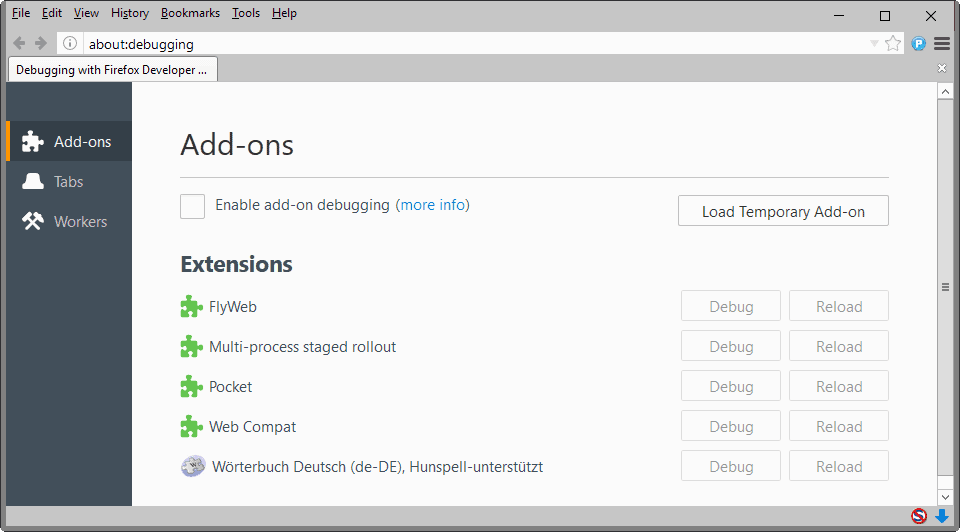-->
Microsoft Edge extensions have a similar workflow when compared to other enterprise UWP apps. The information below details enterprise specific aspects of Microsoft Edge extensions.
The Firefox add-ons were not easy to develop, as they had to be designed with Mozilla’s “XML User Interface Language,” compared to Chrome’s extensions that needed only HTML and CSS to.
Prerequisites
- Nov 15, 2015 Says 'Microsoft XML DOM not available' So far haven't found a fix for it and I can't downgrade internet explorer from Edge browser. Also tried Chrome and Firefox, no joy so far. [email protected] 3 is working though.
- Do I need XML DOM Document & XML HTTP 3.0 Add-ons for just browsing the web? Are they needed for the normal function of internet explorer or they are development tools and I can Disable them and nothing will change in the way I browse the web?
The following items are suggested to develop, package, and deploy a Microsoft Edge extension for enterprise:
- Windows Developer Portal account, to sign and release the extension to the enterprise private store. See Opening a developer account for more details.
- Microsoft Store for Business or Education, to distribute the application to the enterprise. See the Microsoft Store for Business and Education documentation for more details.
- Identify which versions of Windows 10 will be running the Microsoft Edge extension. See Windows 10 release information for a listing of existing Windows 10 releases.
Note
Sideloading can be considered an alternative to using the Windows Developer Portal to sign the release the extension. See the behaviour of sideloading extensions below for more details.
Windows Information Protection
Microsoft Edge extensions currently don't honor Windows Information Protection (WIP) settings. If an enterprise is concerned about data protection, extensions support should not be enabled for Microsoft Edge.
Microsoft Xml Dom Is Not Available Firefox Extensions
To disable extensions for employees, configure Group Policy and Microsoft Intune settings. For more info on which policies to configure, see Available policies for Microsoft Edge.
Packaging Extensions
Before an enterprise can distribute an extension to its employees, it must first be packaged. Instructions on packaging extensions are available in the Packaging guide.
Tip
Be sure to test installing and running your extension on all the versions of Windows 10 to ensure it will work as expected before distributing.
Distributing Extensions
Once an extension has been packaged, it can be distributed to employees through the Microsoft Store, Microsoft Store for Business, or by sideloading.
Microsoft Xml Dom Download
Extensions distributed though the Microsoft Store for Business can either be assigned to employees, or added to a private store where all employees can access them. This can be done by following the Distribute 'Line-of-Business' (LOB) apps to enterprises guide.
To sideload extensions, devices (unmanaged or managed) must be unlocked for sideloading. See Sideload LOB apps in Windows 10 for more info on how to sideload packaged extensions.
Important
If the enterprise is both developing and distributing the extension internally, the enterprise will require both the Microsoft Store for Business (or Education) and a Windows Developer Portal account.
Behavior of Sideloaded Extensions
Unlike extensions distributed through the Microsoft Store (or the Microsoft Store for Business), sideloaded extensions are treated differently in Microsoft Edge.
The first difference affects how sideloaded extensions behave after installation. Unlike extensions from the Microsoft Store, sideloaded extensions do not immediately display the 'You have a new extension' notification and need to be manually turned on by the user.
To turn on the extension, open the More (...) menu, select 'Extensions' and you should see the sideloaded extension in the list of installed extensions. Click on the extension and turn it on.
The second difference affects how sideloaded extensions appear in the browser. For example, both the 'You have a new extension' notification and the list of installed extensions include an additional warning stating that the extension is from an unknown source.
The third and final difference affects how sideloaded extensions behave on browser startup. Sideloaded extensions on devices that are either domain-joined or MDM enabled will behave like extensions from the Microsoft Store. However, sideloaded extensions on devices that are not domain-joined or MDM enabled will be turned off during browser startup and require the user to take explicit action.
Shortly after browser startup (after ~10 seconds of inactivity) the following notification will appear near the bottom of the window.
Each time Microsoft Edge is launched, users will need to select 'Turn on anyway' in order to use the extension.
The Document Object Model (DOM) connects web pages to scripts or programming languages by representing the structure of a document—such as the HTML representing a web page—in memory. Usually that means JavaScript, although modelling HTML, SVG, or XML documents as objects is not part of the JavaScript language, as such.
The DOM represents a document with a logical tree. Each branch of the tree ends in a node, and each node contains objects. DOM methods allow programmatic access to the tree; with them you can change the document's structure, style, or content. Nodes can also have event handlers attached to them; once an event is triggered, the event handlers get executed.
To learn more about what the DOM is and how it represents documents, see our article introduction to the DOM.
DOM interfaces
ChildNodeDOMErrorSelectionTextDecoderTextEncoderXMLDocument
Obsolete DOM interfaces
The Document Object Model has been highly simplified. To achieve this, the following interfaces present in the different DOM level 3 or earlier specifications have been removed. It is uncertain whether some may be reintroduced in the future or not, but for the time being they should be considered obsolete and should be avoided:
HTML DOM
A document containing HTML is described using the Document interface, which is extended by the HTML specification to include various HTML-specific features. In particular, the Element interface is enhanced to become HTMLElement and various subclasses, each representing one of (or a family of closely related) elements.
The HTML DOM API provides access to various browser features such as tabs and windows, CSS styles and stylesheets, browser history, and so forth. These interfaces and discussed further in the HTML DOM API documentation.
SVG interfaces
SVG element interfaces
SVGAltGlyphElementSVGAltGlyphDefElementSVGAltGlyphItemElementSVGAnimateColorElementSVGColorProfileElementSVGFontElementSVGFontFaceElementSVGFontFaceFormatElementSVGFontFaceNameElementSVGFontFaceSrcElementSVGFontFaceUriElementSVGGlyphElementSVGGlyphRefElementSVGHatchElementSVGHatchpathElementSVGHKernElementSVGMarkerElementSVGMeshElementSVGMeshGradientElementSVGMeshpatchElementSVGMeshrowElementSVGMissingGlyphElementSVGSolidcolorElementSVGTRefElementSVGUnknownElementSVGVKernElement
SVG data type interfaces
Here are the DOM APIs for data types used in the definitions of SVG properties and attributes.

Note: Starting in Gecko 5.0, the following SVG-related DOM interfaces representing lists of objects are now indexable and can be accessed; in addition, they have a length property indicating the number of items in the lists: SVGLengthList, SVGNumberList, SVGPathSegList, and SVGPointList.
Static type
Xml Dom Document Add On
SVGColorSVGICCColorSVGMatrixSVGPathSegSVGPathSegClosePathSVGPathSegMovetoAbsSVGPathSegMovetoRelSVGPathSegLinetoAbsSVGPathSegLinetoRelSVGPathSegCurvetoCubicAbsSVGPathSegCurvetoCubicRelSVGPathSegCurvetoQuadraticAbsSVGPathSegCurvetoQuadraticRelSVGPathSegArcAbsSVGPathSegArcRelSVGPathSegLinetoHorizontalAbsSVGPathSegLinetoHorizontalRelSVGPathSegLinetoVerticalAbsSVGPathSegLinetoVerticalRelSVGPathSegCurvetoCubicSmoothAbsSVGPathSegCurvetoCubicSmoothRelSVGPathSegCurvetoQuadraticSmoothAbsSVGPathSegCurvetoQuadraticSmoothRelSVGPathSegListSVGPointSVGPointListSVGRect
Animated type
SVGAnimatedPathData
SMIL related interfaces

Other SVG interfaces
SVGColorProfileRuleSVGCSSRuleSVGExceptionSVGExternalResourcesRequiredSVGLangSpaceSVGLocatableSVGRenderingIntentSVGStylableSVGTransformableSVGViewSpecSVGZoomEvent
Specifications
Do I Need Xml Dom Document
| Specification | Status | Comment |
|---|---|---|
| DOM | Living Standard | |
| DOM4 | Obsolete | |
| Document Object Model (DOM) Level 3 Core Specification | Obsolete | |
| Document Object Model (DOM) Level 2 Core Specification | Obsolete | g |
| Document Object Model (DOM) Level 1 Specification | Obsolete | Initial definition |